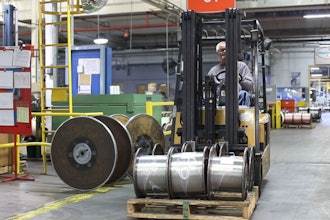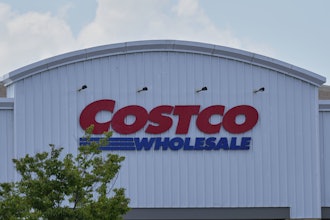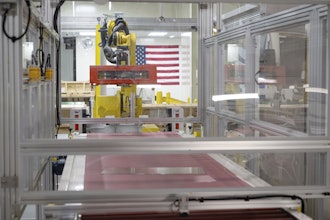Sage X3
Reducing food waste
and increasing efficiency
with enteprise business
management solutions
1
Table of contents
Introduction 3
Benefits of reducing waste 4
Causes of food waste 5
Expiration and spoilage of ingredients 5
Overstocking 5
Cross-contamination 5
Production loss 6
Lack of traceability 6
Improvement through business management solutions 7
Sage X3
Reducing food waste and increasing efficiency with
enteprise business management solutions
2
Introduction
A recent report by Innova Market Insights identified the reduction of food waste as the top
food industry trend of 2014, and the food industry’s concern with food waste should
continue for many years. As reported by FoodManufacture.co.uk, “Food loss during
production and food waste, at the retailer and consumer end of the food-supply
chain, will be heavily scrutinized.”
Efforts to reduce food waste are motivated in part by sustainability concerns, as some
experts estimate that the global food system loses as much as a third of all food grown. As
consumers look to food companies for increased sustainability plans, reducing food waste
will become crucial to preserving corporate sustainability. Consumers and the industry
alike have made it a priority to reduce food waste enormously over the next decade.
Annual food waste disposed by the American food industry
Segment Waste volume Disposal costs
Manufacturing 2.4 billion pounds $59 million
Retail and wholesale 1.7 billion pounds $42 billion
Source: Food Waste Alliance
However, for food manufacturers there is an additional motivation: Wasted food means
inefficiency, higher overhead, and reduced profits. The more food companies can
reduce waste within their organizations, the more efficient—and, thus, profitable—they will
be. Improved efficiency is best enabled by enterprise resource planning with Sage X3, a
fast, flexible enterprise business management solution that helps companies maximize
inventory efficiency and reduce spoilage and expiration.
The more food
companies can reduce
waste within their
organizations, the
more efficient—and,
thus, profitable—they
will be.
Sage X3
Reducing food waste and increasing efficiency with
enteprise business management solutions
3
Food companies could
increase their profits
by as much as 10
percent simply by
reducing food waste.
Benefits of reducing waste
Many food companies accept a certain amount of waste as part of the cost of doing
business. However, regulators and consumers are likely to make waste an urgent
issue rather than a given in coming years, exerting pressure on manufacturers to help
reduce waste in order to make the food supply chain more sustainable. Furthermore,
reducing food waste can have a larger-than-expected effect on a company’s bottom line.
Waste can easily become invisible to decision makers because it is normalized as overhead.
However, once food waste is recognized and reduced, it can bring surprisingly large
improvements in profit—either through reducing purchasing costs or allowing a company
to produce more finished product. According to one report, food companies could increase
their profits by as much as 10 percent simply by reducing food waste.
Sage X3
Reducing food waste and increasing efficiency with
enteprise business management solutions
4
Causes of food waste
It’s easy to tell companies that they need to reduce food waste, but the complexity of
manufacturing operations makes it a difficult task. A crucial first step in improving
efficiency is identifying places where waste occurs. Without a thorough
understanding of the causes of food waste—including those that can begin long before
the point of waste—it is impossible to maximize efficiency. The following section highlights
the most common reasons food waste occurs so that food manufacturers can begin to
address them.
Expiration and spoilage of ingredients
The most obvious cause of food waste is when products either pass their mandated
expiration dates or otherwise spoil. Although companies understandably work hard to
prevent such loss, it is widely seen as part of the cost of doing business. Better
procedures and technology can help reduce expiration and spoilage by speeding up the
production process, allowing less time for food to decay. Sage X3 helps companies track
lots and shelf life so that products can be pushed out before they expire.
Merely trying to speed up the manufacturing process, though, is treating the
symptoms rather than the problem. Most companies can manufacture goods more
than quickly enough to prevent spoilage; the real issue occurs when manufacturers are
unable to move their products down the supply chain at an appropriate rate.
Overstocking
Expiration and spoilage problems, then, often flow from problems in distribution and
stocking. Because supply and demand can fluctuate violently in the food industry, it can
be a challenge to ensure that stock levels remain appropriate. Overstocking results in
waste when companies are unable to sell their finished products. This is a more daunting
challenge than the problem of ingredient spoilage because it is not easily solved by
increasing manufacturing speed or storage technology. Instead, reducing overstocking
requires the ability to anticipate and project consumer demand accurately—no
easy task for any company. Sage X3 provides robust business intelligence to help
companies avoid overstocking. This solution gives insight into historic fluctuations in
supply and demand to better enable accurate forecasting.
Cross-contamination
Another common cause of food waste lies in cross-contamination. The incidence of
cross-contamination has increased as consumers demand more foods free of allergens,
GMOs, or other ingredients, and companies rush to fulfill the demand. Preventing cross-
contamination of microscopic substances like gluten represents a huge challenge for food
manufacturers, and protocols for effectively preventing it are still being developed.
Cross-contamination is a frequent cause of recalls when products leak out to the public,
whereas if the problem is caught before the products are distributed, the result is food
waste. Better warehouse management and food safety plans help reduce
cross-contamination and must be part of an overall corporate commitment to
safe food handling. The tracking functions in Sage X3 make it easier for companies to
manage their warehouses and processes so that cross-contamination will not occur. Its
allergen tracking system makes it possible to easily segregate ingredients in the
warehouse and move them out before they spoil.
Without a thorough
understanding of the
causes of food waste—
including those that
can begin long before
the point of waste—it
is impossible to
maximize efficiency.
Sage X3
Reducing food waste and increasing efficiency with
enteprise business management solutions
5
The core of food waste
problems, whether
spoilage or cross-
contamination, is often
a lack of effective
tracking.
Causes of food waste
Production loss
Of course, some food waste will always occur, and perhaps the most inevitable cause lies
in the typical waste associated with processing. Although some industries, such as
beverage, may have negligible processing waste, for others the amount of food left on
equipment or lost in other forms of processing can add up significantly. The primary
solution for this form of waste lies in continuous innovation to processing equipment and
material handling. As with other elements of food waste, however, awareness of where
food waste occurs is critical to knowing where to focus innovation, and many
companies lack this awareness. With the detailed and easily accessed tracking
information that Sage X3 provides, gaining insight into where food loss occurs is much
more practicable.
Lack of traceability
The core of food waste problems, whether spoilage or cross-contamination, is often a lack
of effective tracking. Expiration and spoilage occur because a company has slow or
ineffective expiration tracking. Overstocking can be traced to an inability to track sales
from year to year in order to produce an accurate seasonal forecast. Cross-contamination
has many causes, but a major one can be a lack of effective traceability within a
company’s own warehouses. Lastly, although traceability does not mitigate production
loss, without it, companies will never know which processes are causing the most waste.
In short, traceability both along the supply chain and within food companies
themselves represents the most important tool available to reduce food waste
and inefficiency. Sage X3 offers robust traceability tools in an easy-to-use and
accessible interface.
Sage X3
Reducing food waste and increasing efficiency with
enteprise business management solutions
6
Sage X3 makes
tracking information
available at the touch
of a finger to everyone
who needs it.
Improvement through
business management
solutions
Sage X3 is a powerful traceability solution for small and medium food manufacturers,
offering powerful and easy-to-use expiration tracking, lot management, and process
information. With the leading automation and resource management solution of
Sage X3, you get powerful data and convenient insight into all your operations.
The solution’s mobile options and easy-to-use interface make tracking information
available at the touch of a finger to everyone who needs it, including lot tracking
information accessible within four minutes.
For additional information about traceability, new regulations in the food industry, or
resolving resource management challenges, visit our Sage X3 Food Industry
Resource Center at www.SageFoodSolutions.com, or call us at 1-866-530-7243.
Sage X3
Reducing food waste and increasing efficiency with
enteprise business management solutions
7
Sage
6561 Irvine Center Drive
Irvine, CA 92618-2301
866-996-7243
Sage.com
©2015 Sage Software, Inc. All rights reserved. Sage, the Sage logos, and the Sage product and service names mentioned herein are registered trademarks or trademarks of Sage Software, Inc., or its affiliated entities.
All other trademarks are the property of their respective owners. 15-00791 9/15
Reducing Food Waste and Increasing Profits with ERP Solutions
Waste can easily become invisible to decision makers because it is normalized as overhead. However, once food waste is recognized and reduced, it can bring surprisingly large improvements in profit—either through reducing purchasing costs or allowing a company to produce more finished product. According to one report, food companies could increase their profits by as much as 10 percent simply by reducing food waste. Wasted food means inefficiency, higher overhead, and reduced profits. The more food companies can reduce waste within their organizations, the more efficient—and, thus, profitable—they will be.
Latest in Home
ABB to Invest $110 Million in 4 U.S. Plants
September 17, 2025
Nvidia CEO Huang Says He's Disappointed by China Chip Curbs
September 17, 2025






















